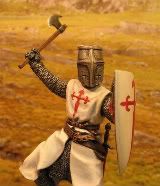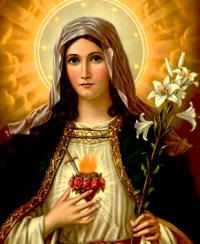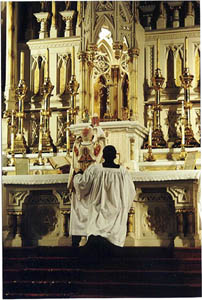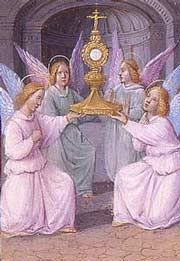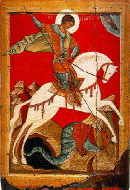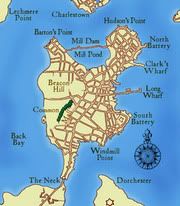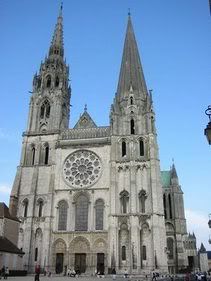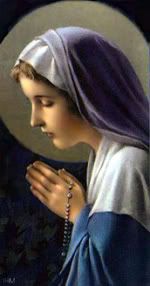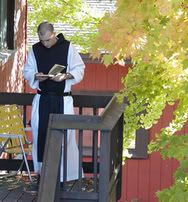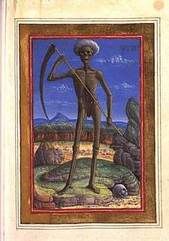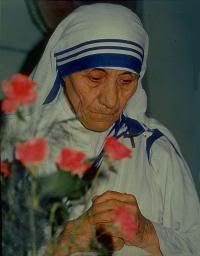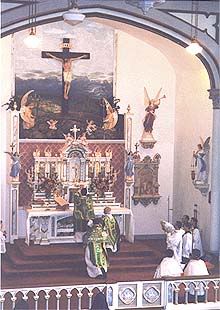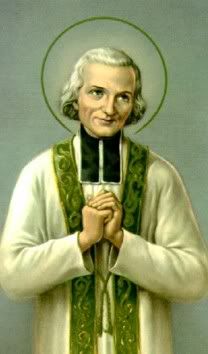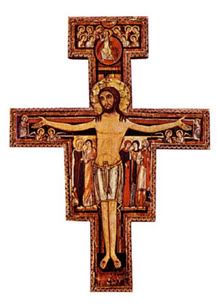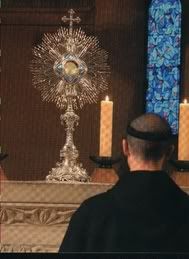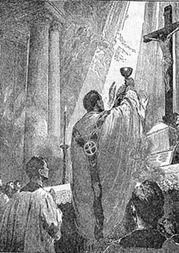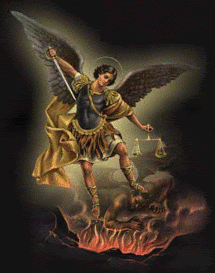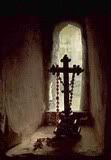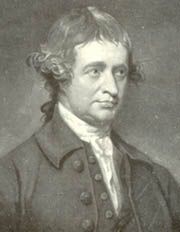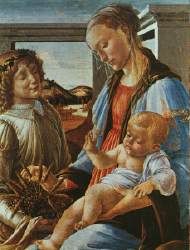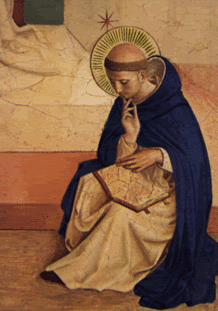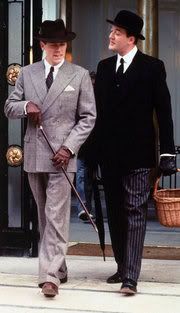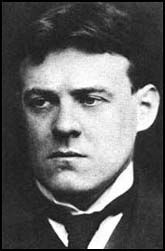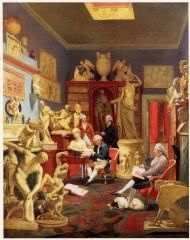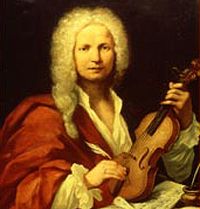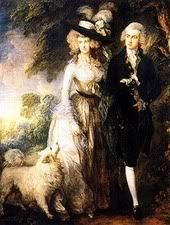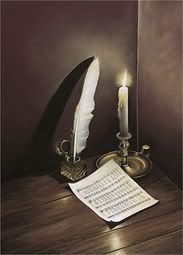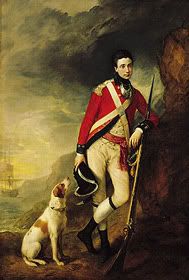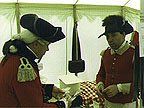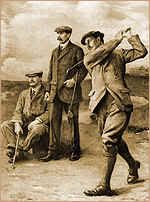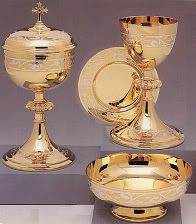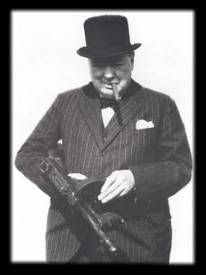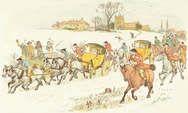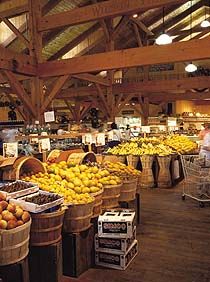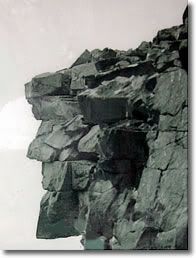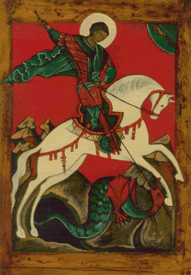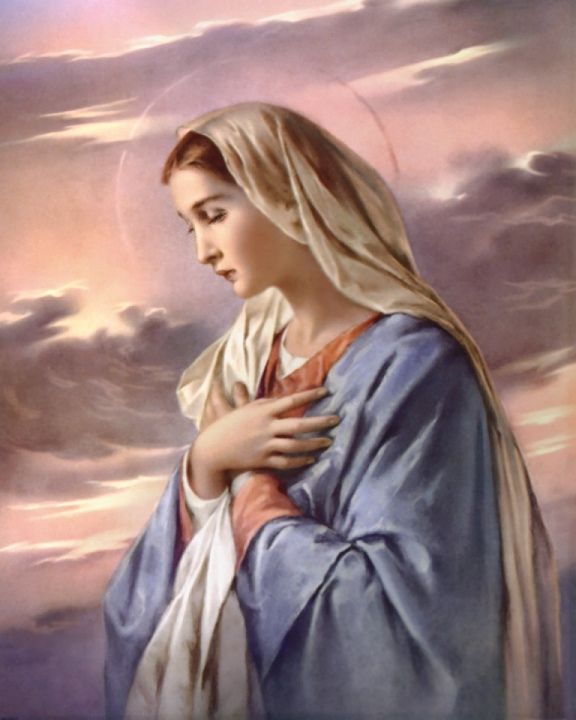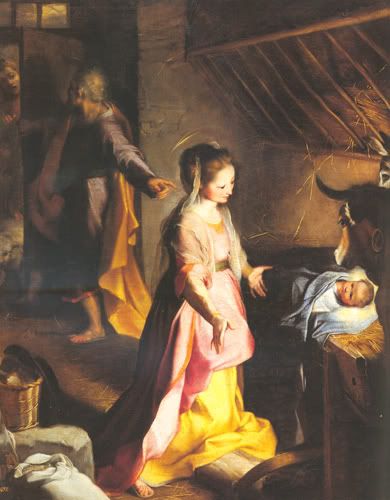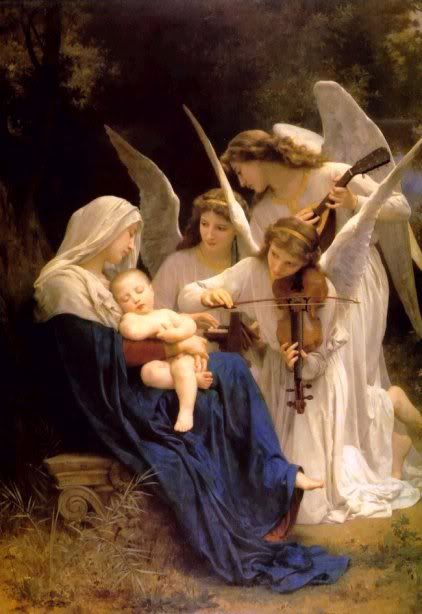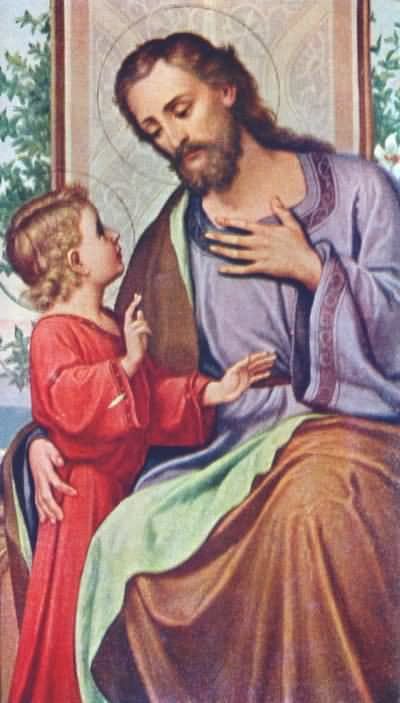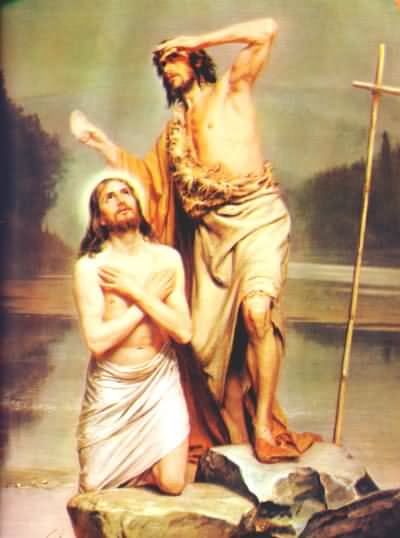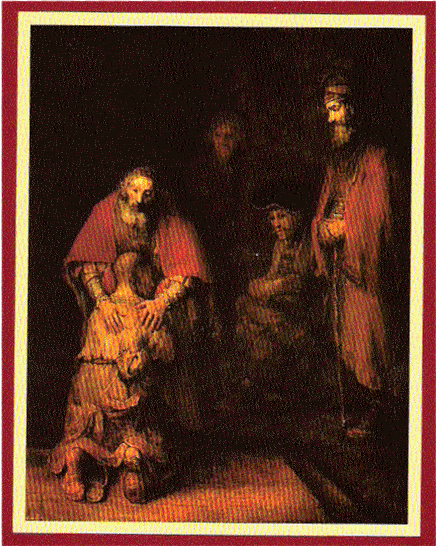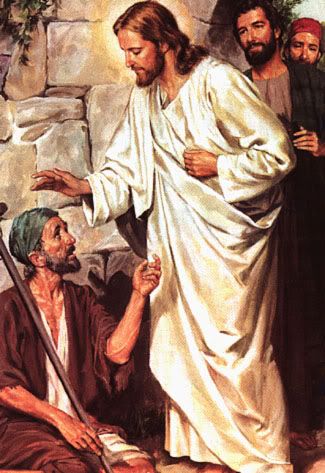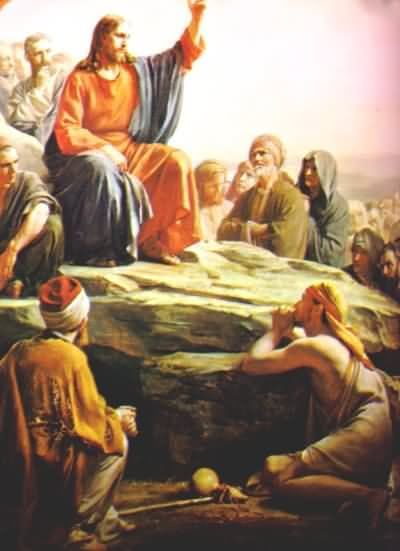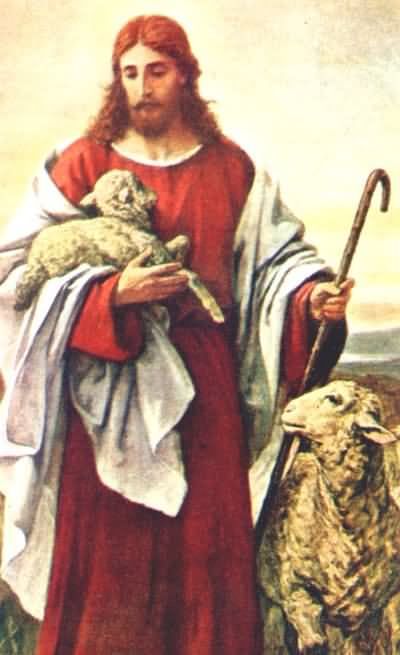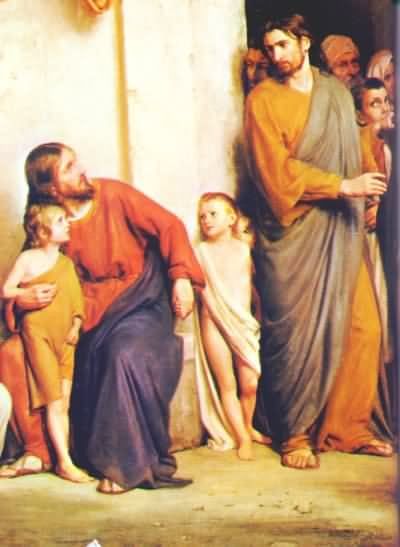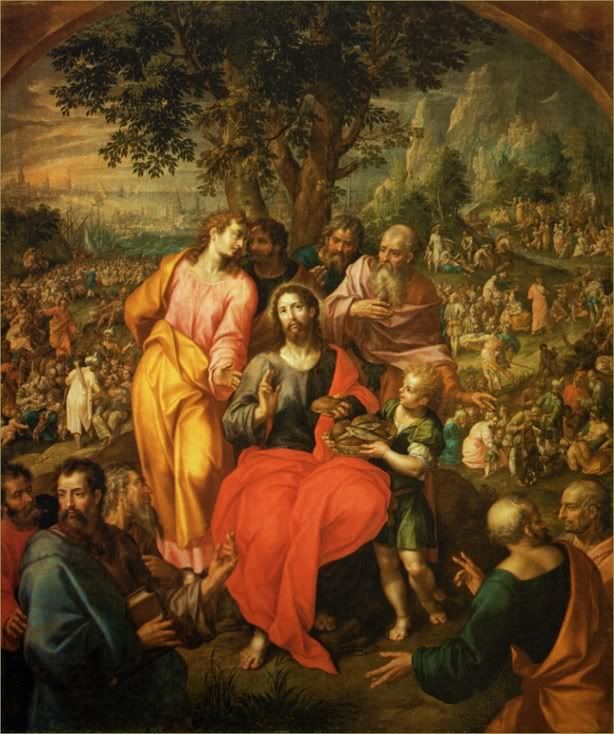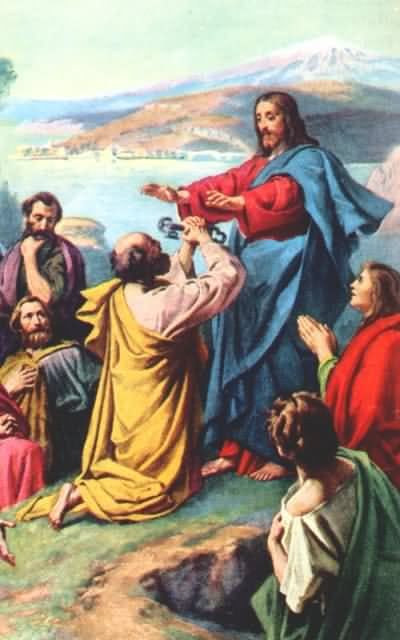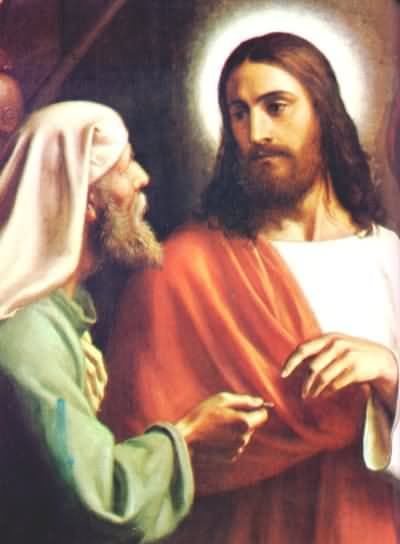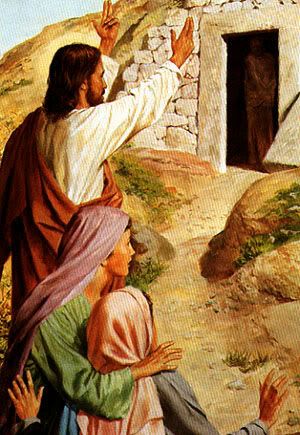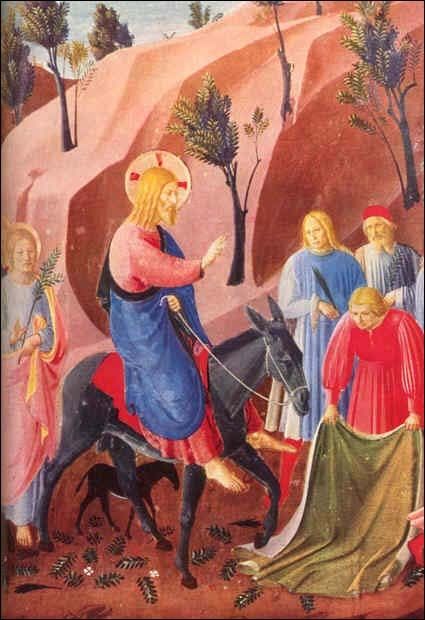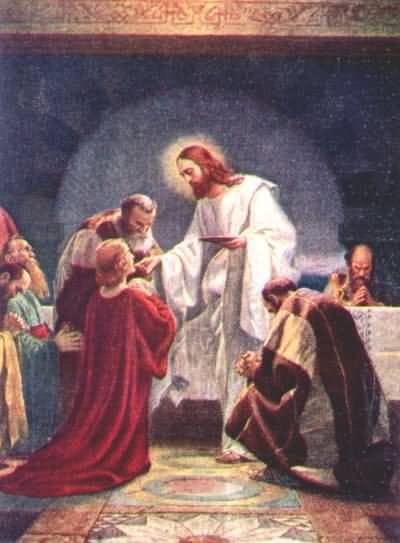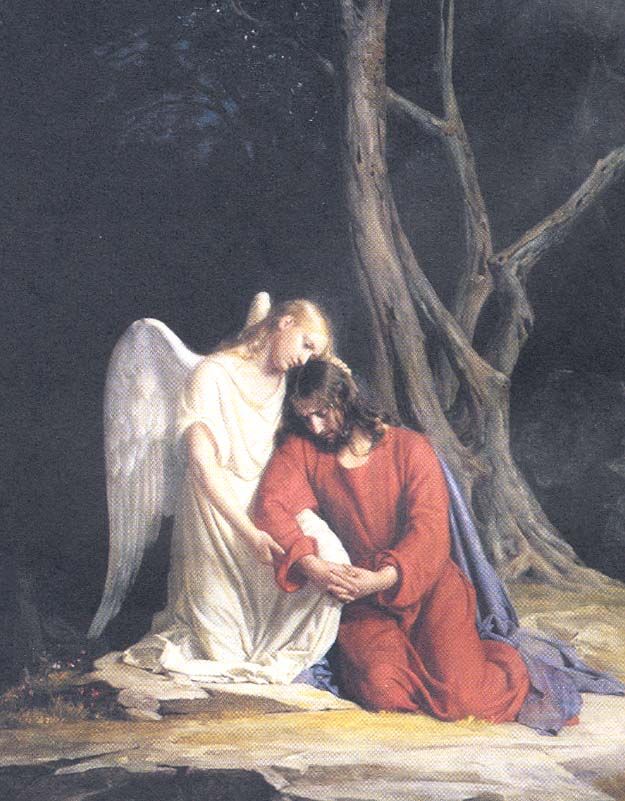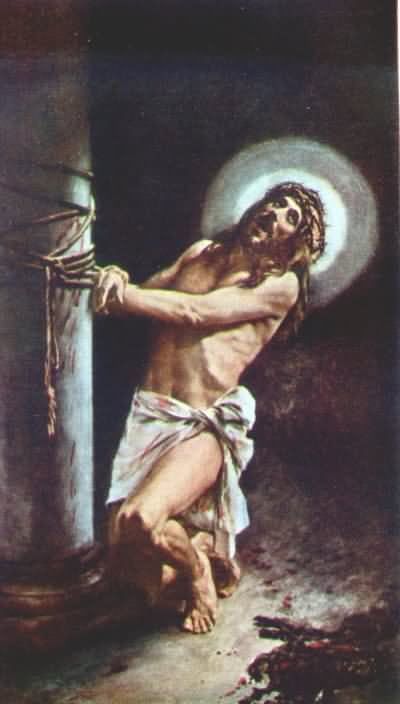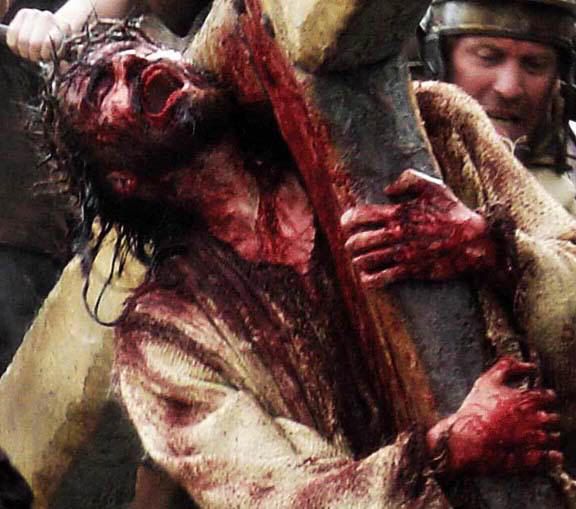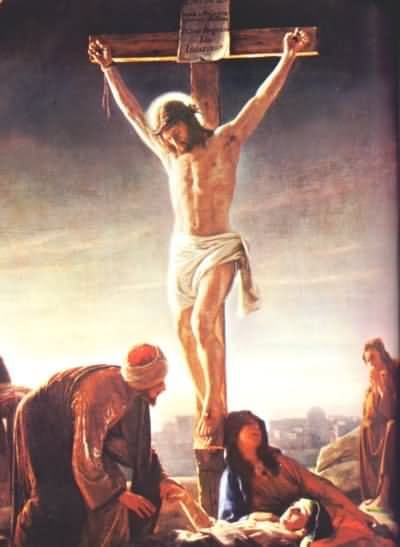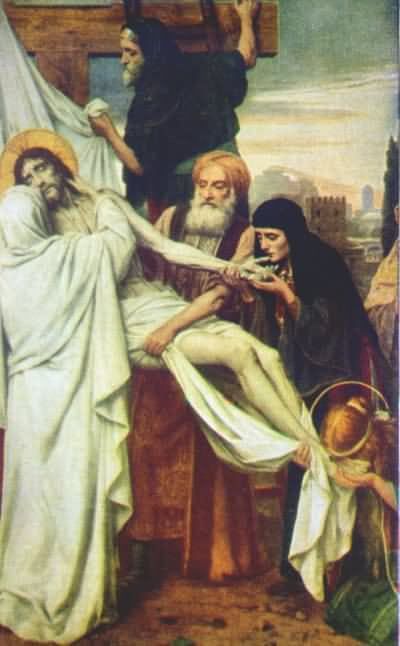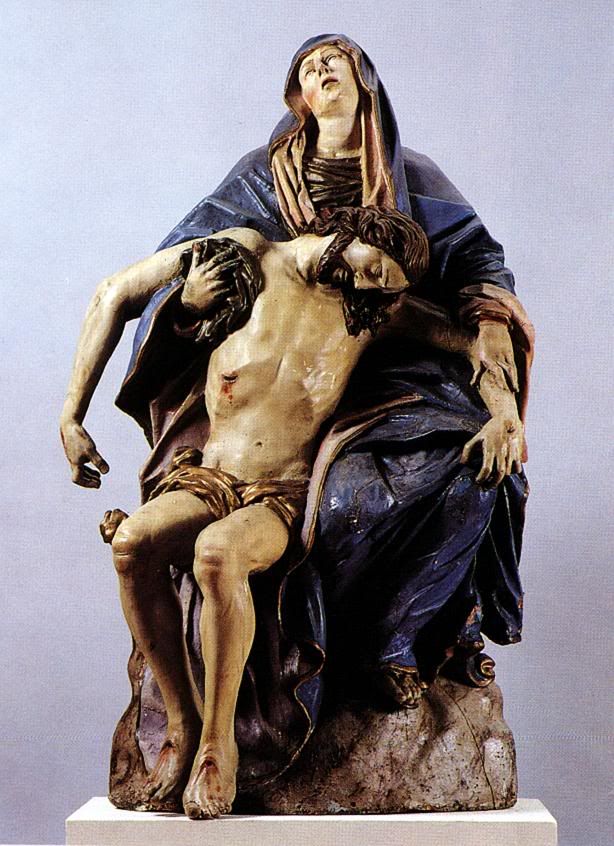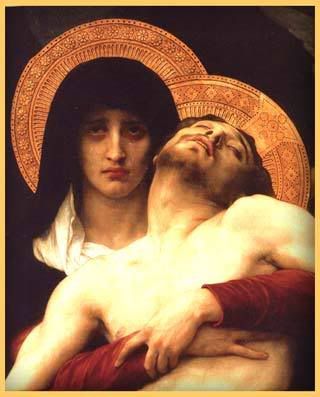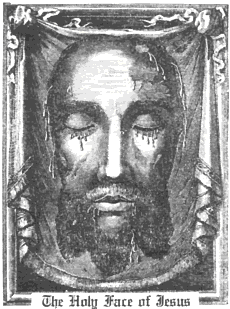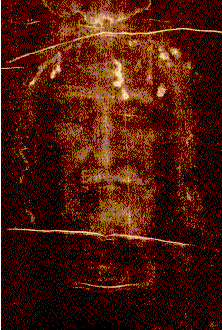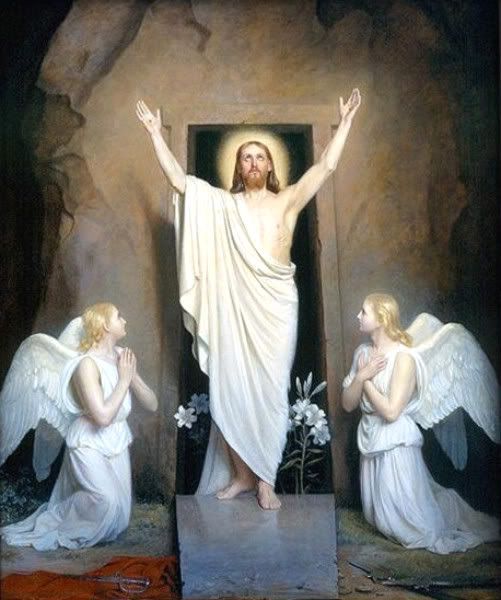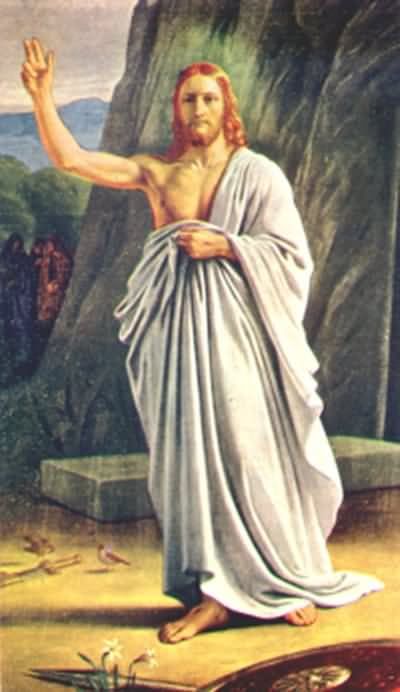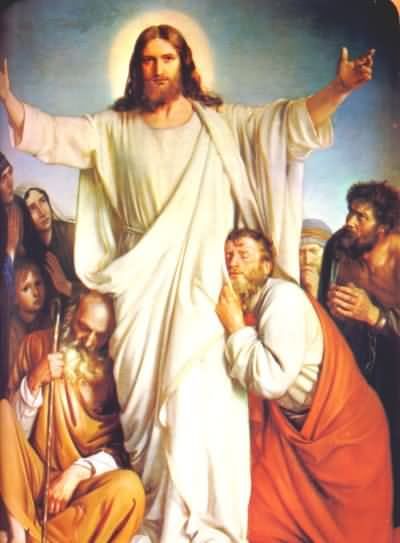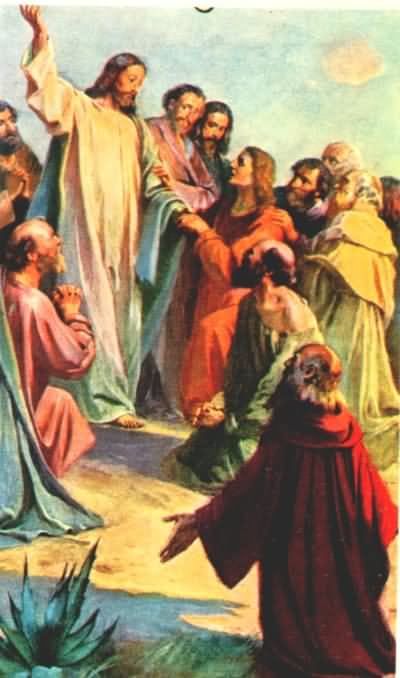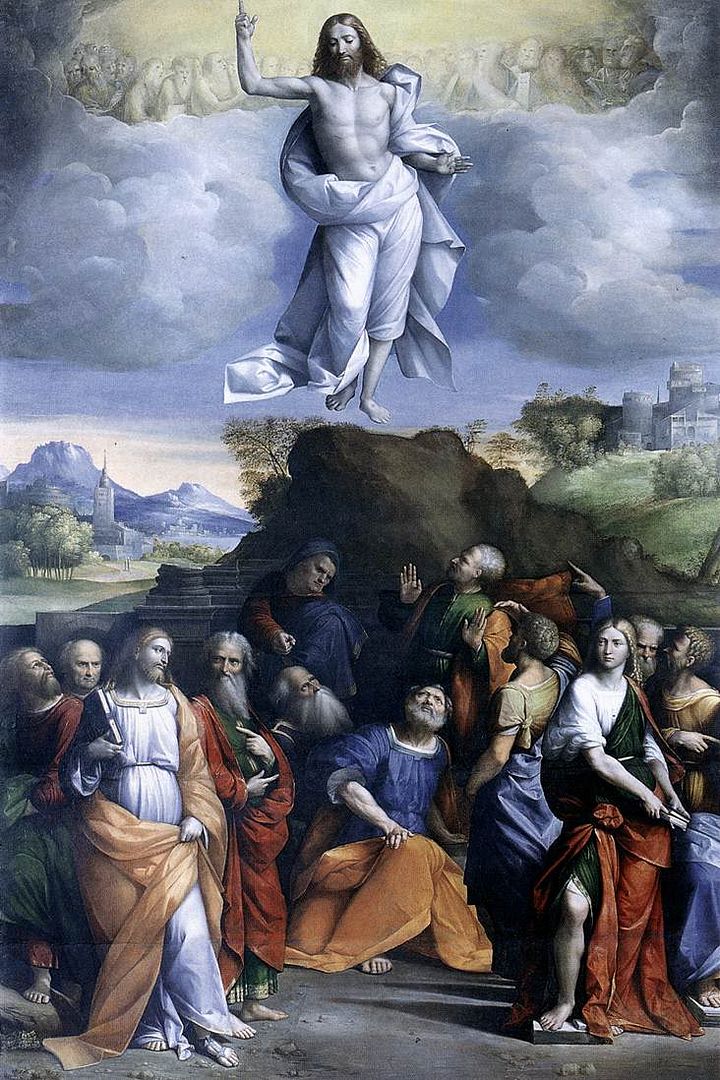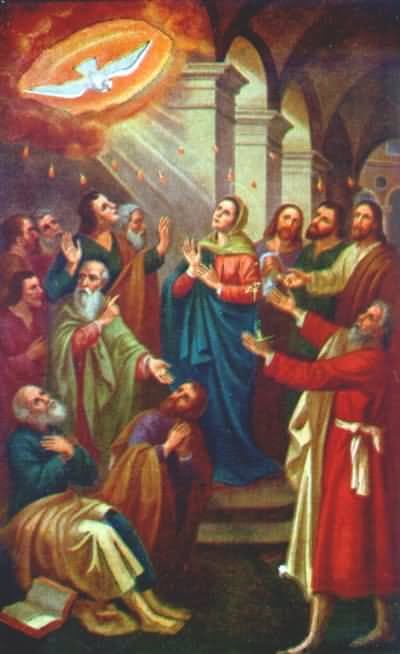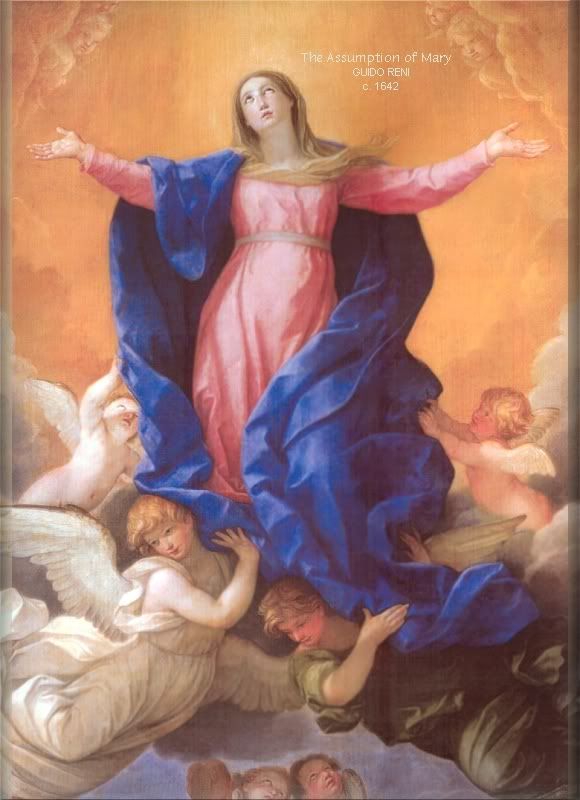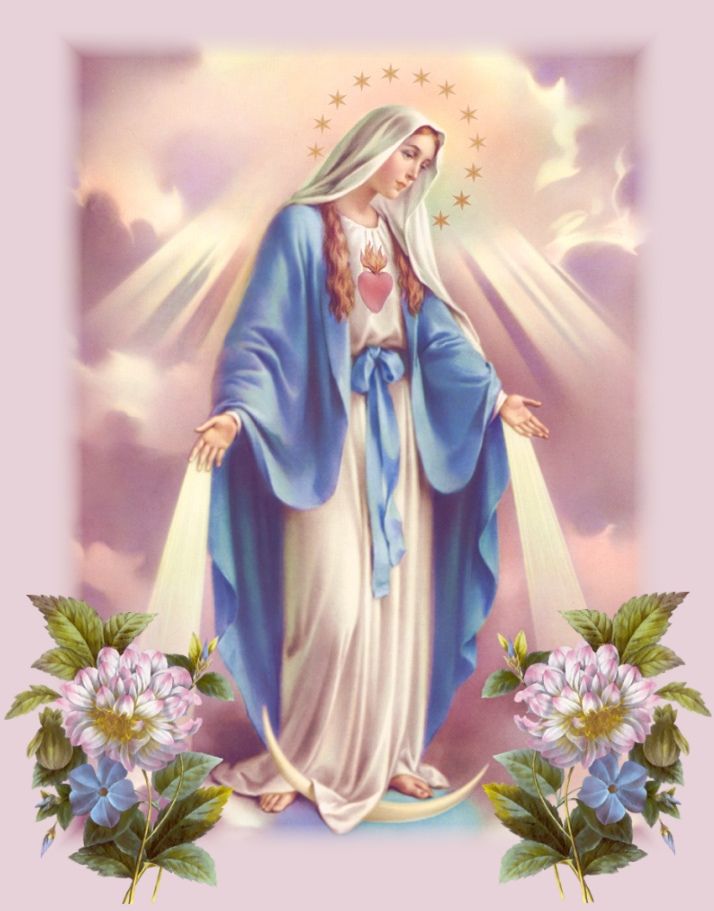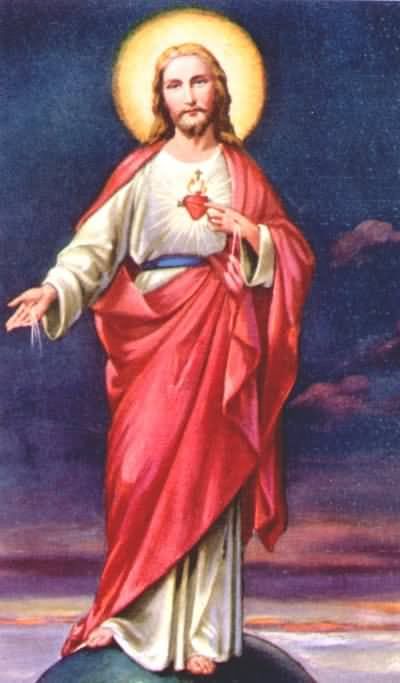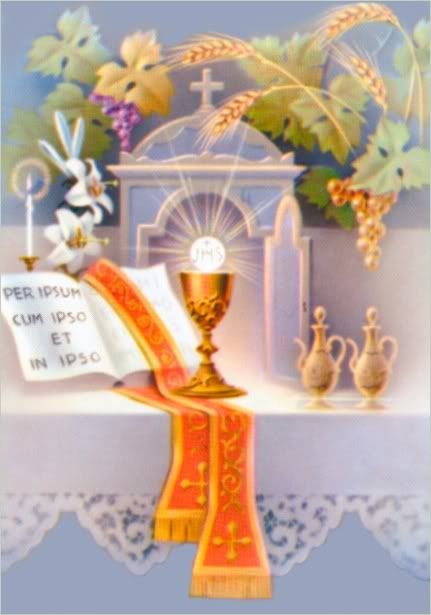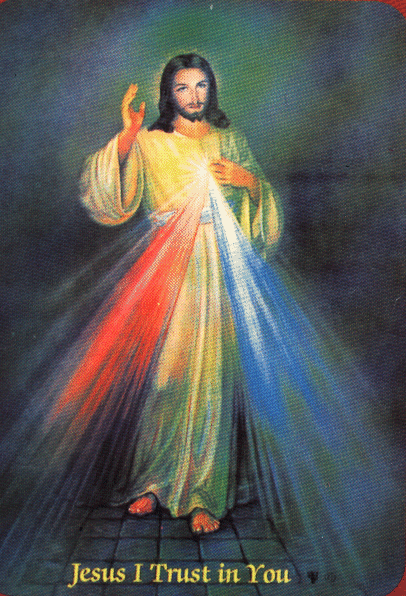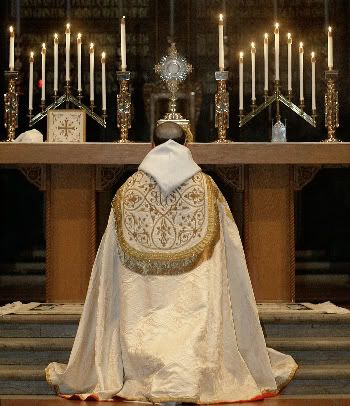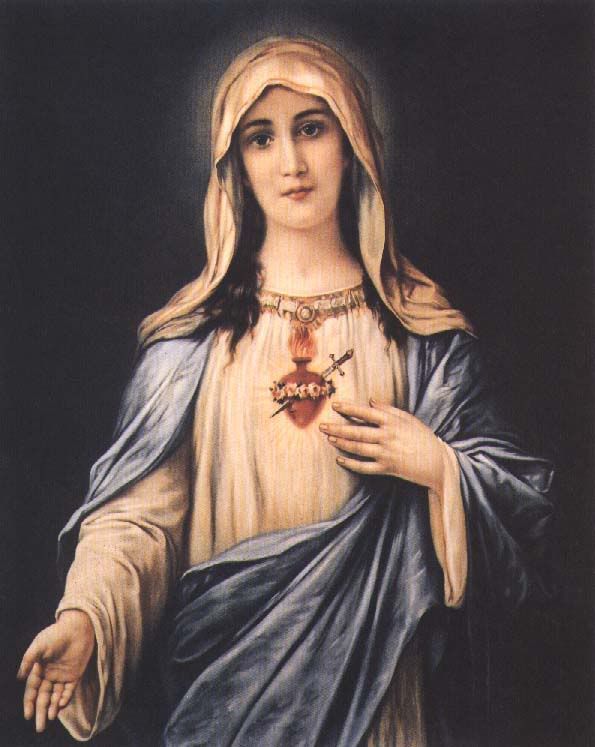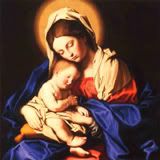Saturday, November 01, 2014
All Hallows', 2014
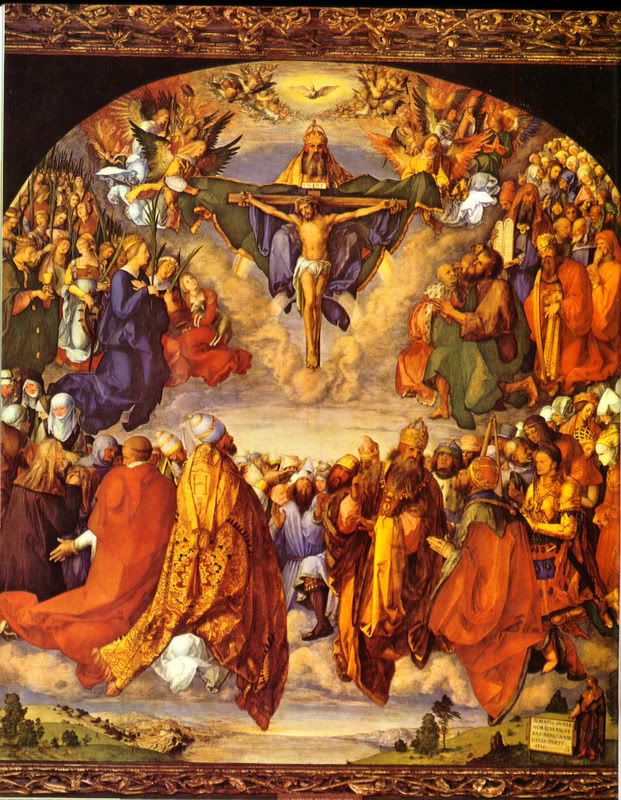
For All the Saints
For all the saints, who from their labors rest,
Who Thee by faith before the world confessed,
Thy Name, O Jesus, be forever blessed.
Alleluia, Alleluia!
Thou wast their Rock, their Fortress and their Might;
Thou, Lord, their Captain in the well fought fight;
Thou, in the darkness drear, their one true Light.
Alleluia, Alleluia!
For the Apostles’ glorious company,
Who bearing forth the Cross o’er land and sea,
Shook all the mighty world, we sing to Thee:
Alleluia, Alleluia!
For the Evangelists, by whose blest word,
Like fourfold streams, the garden of the Lord,
Is fair and fruitful, be Thy Name adored.
Alleluia, Alleluia!
For Martyrs, who with rapture kindled eye,
Saw the bright crown descending from the sky,
And seeing, grasped it, Thee we glorify.
Alleluia, Alleluia!
O blest communion, fellowship divine!
We feebly struggle, they in glory shine;
All are one in Thee, for all are Thine.
Alleluia, Alleluia!
O may Thy soldiers, faithful, true and bold,
Fight as the saints who nobly fought of old,
And win with them the victor’s crown of gold.
Alleluia, Alleluia!
And when the strife is fierce, the warfare long,
Steals on the ear the distant triumph song,
And hearts are brave, again, and arms are strong.
Alleluia, Alleluia!
The golden evening brightens in the west;
Soon, soon to faithful warriors comes their rest;
Sweet is the calm of paradise the blessed.
Alleluia, Alleluia!
But lo! there breaks a yet more glorious day;
The saints triumphant rise in bright array;
The King of glory passes on His way.
Alleluia, Alleluia!
From earth’s wide bounds, from ocean’s farthest coast,
Through gates of pearl streams in the countless host,
And singing to Father, Son and Holy Ghost:
Alleluia, Alleluia!

The Litany of the Saints
Lord, have mercy on us. (Lord have mercy on us.)
Christ, have mercy on us. (Christ have mercy on us.)
Lord, have mercy on us. (Lord, have mercy on us.)
Christ, hear us. (Christ, hear us.)
Christ, graciously hear us. (Christ, graciously hear us.)
God the Father of heaven, (have mercy on us.)
God the Son, Redeemer of the world, (have mercy on us.)
God the Holy Ghost, (have mercy on us.)
Holy Trinity, one God, (have mercy on us.)
Holy Mary, (Pray for us.)
Holy Mother of God,
Holy Virgin of virgins,
St. Michael,
St. Gabriel,
St. Raphael,
All ye holy Angels and Archangels,
All ye holy orders of blessed Spirits,
St. John the Baptist,
St. Joseph,
All ye holy Patriarchs and Prophets,
St. Peter,
St. Paul,
St. Andrew,
St. James,
St. John,
St. Thomas,
St. James,
St. Philip,
St. Bartholomew,
St. Matthew,
St. Simon,
St. Thaddeus,
St. Matthias,
St. Barnabas,
St. Luke,
St. Mark,
All ye holy Apostles and Evangelists,
All ye holy Disciples of the Lord,
All ye holy Innocents,
St. Stephen,
St. Lawrence,
St. Vincent,
SS. Fabian and Sebastian,
SS. John and Paul,
SS. Cosmas and Damian,
SS. Gervase and Protase,
All ye holy Martyrs,
St. Sylvester,
St. Gregory,
St. Ambrose,
St. Augustine,
St. Jerome,
St. Martin,
St. Nicholas,
All ye holy Bishops and Confessors,
All ye holy Doctors,
St. Anthony,
St. Benedict,
St. Bernard,
St. Dominic,
St. Francis,
All ye holy Priests and Levites,
All ye holy Monks and Hermits,
St. Mary Magdalen,
St. Agatha,
St. Lucy,
St. Agnes,
St. Cecilia,
St. Catherine,
St. Anastasia,
All ye holy Virgins and Widows,
All ye holy Saints of God, (Make intercession for us.)
Be merciful, (Spare us, O Lord.)
Be merciful, (Graciously hear us, O Lord.)
From all evil, O Lord (Deliver us.)
From all sin,
From Thy wrath,
From sudden and unlooked for death,
From the snares of the devil,
From anger, and hatred, and every evil will,
From the spirit of fornication,
From lightning and tempest,
From the scourge of earthquakes,
From plague, famine and war,
From everlasting death,
Through the mystery of Thy holy Incarnation,
Through Thy Coming,
Through Thy Birth,
Through Thy Baptism and holy Fasting,
Through Thy Cross and Passion,
Through Thy Death and Burial,
Through Thy holy Resurrection,
Through Thine admirable Ascension,
Through the coming of the Holy Ghost, the Paraclete.
In the day of judgment.
We sinners, (We beseech Thee, hear us.)
That Thou wouldst spare us,
That Thou wouldst pardon us,
That Thou wouldst bring us to true penance,
That Thou wouldst vouchsafe to govern and preserve Thy holy Church,
That Thou wouldst vouchsafe to preserve our Apostolic Prelate, and all orders of the Church in holy religion,
That Thou wouldst vouchsafe to humble the enemies of holy Church,
That Thou wouldst vouchsafe to give peace and true concord to Christian kings and princes,
That Thou wouldst vouchsafe to grant peace and unity to the whole Christian world,
That Thou wouldst call back to the unity of the Church all who have strayed from her fold, and to guide all unbelievers into the light of the Gospel
That Thou wouldst vouchsafe to confirm and preserve us in Thy holy service,
That Thou wouldst lift up our minds to heavenly desires,
That Thou wouldst render eternal blessings to all our benefactors,
That Thou wouldst deliver our souls, and the souls of our brethren, relations, and benefactors, from eternal damnation,
That Thou wouldst vouchsafe to give and preserve the fruits of the earth,
That Thou wouldst vouchsafe to grant eternal rest to all the faithful departed,
That Thou wouldst vouchsafe graciously to hear us,
Son of God,
Lamb of God, who take away the sins of the world, (spare us, O Lord.)
Lamb of God, who take away the sins of the world, (graciously hear us, O Lord.)
Lamb of God, who take away the sins of the world, (have mercy on us.)
Christ, (hear us.)
Christ, (graciously hear us.)
Lord, have mercy, (Lord, have mercy.)
Christ, have mercy, (Christ, have mercy.)
Lord, have mercy, (Lord, have mercy.)
[Our Father inaudibly] And lead us not into temptation (but deliver us from evil.)
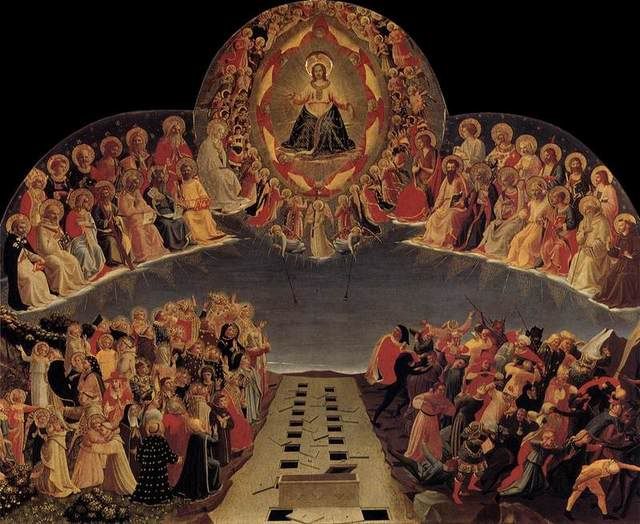
Penitens has a wonderful listing of the saints from the litany, with illustrations.
Also, see Jay at Pro Ecclesia for an excellent summation, bringing together and uniting the history of Halloween and Hallowmas.
Terry at Abbey Roads 2 has another excellent post.
Hallowmas in the Philippines, at Ecce Ego, Quia Vocasti Me.
Friday, October 31, 2014
Adam's Scary Apples
The Ghost's Lament
The origin of this oft-repeated ditty is an old English fairy story called The Cauld Lad Of Hyltyn or Hilton).
At Hilton Hall, long years ago, there lived a Brownie that was the contrariest Brownie you ever knew. At night, after the servants had gone to bed, it would turn everything topsy-turvy, put sugar in the salt-cellars, pepper into the beer, and was up to all kinds of pranks. It would throw the chairs down, put tables on their backs, rake out fires, and do as much mischief as could be. But sometimes it would be in a good temper, and then!–"What’s a Brownie?” you say. Oh, it’s a kind of a sort of a Bogle, but it isn’t so cruel as a Redcap! What! you don’t know what’s a Bogle or a Redcap! Ah, me! what’s the world a- coming to? Of course a Brownie is a funny little thing, half man, half goblin, with pointed ears and hairy hide. When you bury a treasure, you scatter over it blood drops of a newly slain kid or lamb, or, better still, bury the animal with the treasure, and a Brownie will watch over it for you, and frighten everybody else away.
Where was I? Well, as I was a-saying, the Brownie at Hilton Hall would play at mischief, but if the servants laid out for it a bowl of cream, or a knuckle cake spread with honey, it would clear away things for them, and make everything tidy in the kitchen. One night, however, when the servants had stopped up late, they heard a noise in the kitchen, and, peeping in, saw the Brownie swinging to and fro on the Jack chain, and saying:
“Woe’s me! woe’s me!
The acorn’s not yet
Fallen from the tree,
That’s to grow the wood,
That’s to make the cradle,
That’s to rock the bairn,
That’s to grow to the man,
That’s to lay me.
Woe’s me! woe’s me!”
So they took pity on the poor Brownie, and asked the nearest henwife what they should do to send it away. “That’s easy enough,” said the henwife, and told them that a Brownie that’s paid for its service, in aught that’s not perishable, goes away at once. So they made a cloak of Lincoln green, with a hood to it, and put it by the hearth and watched. They saw the Brownie come up, and seeing the hood and cloak, put them on, and frisk about, dancing on one leg and saying:
“I’ve taken your cloak, I’ve taken your hood;
The Cauld Lad of Hilton will do no more good.”
And with that it vanished, and was never seen or heard of afterwards.
The Origin Of Trick-Or-Treating
The Church looked somewhat askance at this custom. But, as the Church did with many pre-Christian customs that we still observe as Christmas rituals, it gave the celebration of the night of October 31st a Christian content.
First All Saints' Day was imposed on November 1st, and made a day of mandatory attendance at Mass. Later, a day to honor all the faithful departed, All Souls' Day was added on November 2nd.
The custom of dressing up in the clothes of the dead and going door-to-door was transformed into the "luck visit" ritual called "going a-souling." Young people would visit, and beg for soul cakes (square cakes of something like raisin bread), sometimes singing souling songs.
If given a soul cake, the visitor would promise to pray for the soul of the donor, or anyone he designated. This custom was, in the 19th century revived and transformed into trick-or-treating.
You will notice a strong resemblence between trick-or-treating and Christmas "luck visits" like carolling, John Canoe, wassailing, the Plough Monday ritual, and the wren boys in Ireland. In England, once Hallowmas was more-or-less replaced with Guy Fawkes Night, and souling fell out of fashion, children used to go door to door to beg "A penny for the Guy?". There was also here in the US, especially in New York, in the 19th century a Thanksgiving Day begging door-to-door ritual which is similar.
They are indeed related customs. Luck or good fortune, in this case in the form of prayers for the soul, are exchanged for gifts of food or drink. Both are new year rituals, with trick-or-treating a reminder that October 31st was new year's eve for the Celts.
Today many Catholic schools have children dress up as saints, and attend Mass on All Saints Day so attired. This is another adaptation of the "luck visit" ritual that is at the root of trick-or-treating. And many children now have two costumes, something spooky for All Hallows' Eve, and a saint's attire for All Hallows.
Why not?

The Story Of the Jack-O-Lantern

Many of you will be familiar with this story, but it illustrates the Christian origins of one of the most cherished Halloween customs.
Back in the days after Saint Patrick had converted Ireland, there lived an Irishman named Jack. Now Jack was a notoriously mean, stingy, and hard-drinking reprobate. Jack wanted a drink, but could not afford one. He somehow summoned the Devil, and offered him his soul for a drink. The Devil agreed.
Jack asked for hard cider, and asked the Devil to climb a tree to get apples to make cider from. The Devil climbed up, and sent down some apples. Once Jack had the apples, he quickly carved a cross in the trunk of the tree, making it impossible for the Devil to come down out of the tree. Jack and the Devil agreed that Jack would efface the cross, so that the Devil could come down, and the Devil would never accept Jack's soul into Hell. Jack went off with the cider and laughing in his sleeve.
Jack continued his life of sin. When he finally died, he presented himself at the Gates of Heaven, only to be turned away for being in life too mean, too tight, and too thirsty.
"Well," Jack said, "off to Hell I go." But when he got there, the Devil reminded Jack of their bargain, and refused him. To speed him on his way, the Devil hurled a coal from the fires of Hell at Jack.
Jack had been eating a turnip, and had hollowed it out fairly well. Jack defended himself from the burning coal by putting up the turnip, and caught the coal in it. Since then, using his hollowed out turnip with its coal from the fires of Hell as a lantern, Jack has been wandering the earth in search of a drink and a refuge.
He is known as Jack of the Lantern, or jack-o-lantern.
In Ireland, it was the custom to carve grotesque faces into turnips, and use them as lanterns for going a'souling around Hallowmas.
When the Irish came to America, they found turnips not particularly popular. But the Yankees used pumpkins for everything, including soup tureens, ladles, and storage pots. The Irish found that pumpkins made excellent substitutes for Jack's turnip lantern. That is why we carve pumpkins into jack-o-lanterns to this day.
Thursday, October 30, 2014
Foods For An Authentic Irish Halloween
NB: This year, Halloween falls on a Friday, so omit the Irish back bacon or cured pork from the recipes. No ham, either. Serve some fried fish on the side.
The Irish, of course, quite apart from saving Western Civilization by safeguarding its learning and the classical tradition during the early Middle Ages, gave us what we now call Halloween.
In Celtic lands, the foremost of which is Ireland, the night of October 31st was the new year, celebrated with fire rites, and feasts laid out for those who had died during the year. The fire rites, sometimes innocent bonfires, at other times sacrificial in nature, were to warm the sun for its coming battle with winter's cold. Villages would spread out foods, especially cider and bread, on tables, and villagers, dressed in the clothes of those who had recently died, would be the guests. They might go door-to-door begging in this sympathetic disguise. We see here the earliest form of trick-or-treating. When the "spirits" had eaten their fill, they were escorted to the edge of town, and the village would be symbolically rid of the spirits of the dead.
In Christian times, the story of Jack Of the Lantern and his hollowed-out turnip lantern and dealings with the devil was added. And the custom of the poor going from door-to-door took on a new twist. The beggars would offer their prayers for the deceased of the household in exchange for soul bread, or soul cakes.
The Church super-imposed the feast of All Hallows or All Saints Day on the day after Halloween, but many of the Celtic customs (vegetable lanterns, house-to-house visiting, bonfires, bobbing for apples--which the Celts picked up from the Romans) continued. And the time of year was even more closely associated with the dead when All Souls' Day was added on November 2nd, and the entire month of November dedicated to the Poor Souls in Purgatory.
Halloween took on its modern form here in the United States after Irish immigrants came in large numbers.
So it is entirely fitting and proper to celebrate Halloween as a great Irish feast, with distinctively Irish foods.
Let's start with Barmbrack, the fruitcake traditionally served for Halloween night. You need a pudding (English and Irish slang for dessert) for Halloween, and barmbrack is the traditional choice. Since the night of October 31st is a traditional time for fortune-telling nonsense, a ring is included in the barmbrack. Whoever finds it will allegedly be married in the next year. This is similar to the hiding of charms that allegedly foretell the future in English Twelfth Cakes.
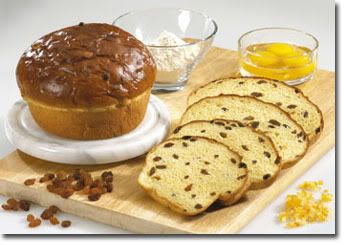
Barmbrack
2 1/2 cup Mixed dry fruit--currants, dates & raisins
1 cup Boiling black tea
1 Egg, slighty beaten
1 Mixed spice
4 tsp Orange Marmalade
1 1/3 cup superfine/castor sugar
2 1/2 cups Self-raising flour
1 ring wrapped in wax paper (optional)
Place dried fruit in a bowl, cover with the hot tea and let soak overnight.
The next day, add the remaining ingredients. and mix well. Add ring wrapped in greaseproof paper(optional).
Preheat oven to 375 F. Pour batter into greased 7" square pan and bake in the center of oven for 1 1/2 hrs.
Let cool in the pan on a wire rack. Slice and serve buttered with tea.
But for your main meal, you need something filling, and Champ certainly is that.
Champ
Want something to serve Halloween night that is not loaded with sugar? Before the kids gourge on trick-or-treat candy and caramel apples, get something with a little substance into them. If it is cold in your part of the country this Halloween night, they'll need something that will stick to their ribs. Try Champ.
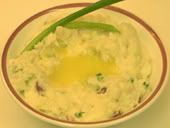
Champ is essentially rich-man's mashed spuds. It is traditionally served in Ireland as an alternative to Colcannon on Halloween night. Colcannon often has cabbage, which I dislike. Champ lacks the offending greenery.
You need:
8 large russets (I like Yukon Gold)
2 cups heavy cream
1/2 pound butter
fresh or dried chives to taste
fried or dried onions to taste
salt to taste
freshly grated pepper to taste
1/4 pound butter
1 pound Irish back bacon
Cut a strip 1/2 inch wide along the circumference of each of the spuds. This gives them better flavor, and allows for easier peeling once they have been boiled. Then boil them in their jackets.
Fry up the Irish back bacon. Irish back bacon is more like cured pork than our smoked breakfast bacon. Once the back bacon is done, dry it off with paper towels, and cut off and remove the fat and dice up the choice pieces.
Peel the spuds, and place them in a large bowl and mash them with the cream, the 1/2 pound of butter (or more, if you like) chives, onions, salt and pepper. Mix them up and bring the spuds to a consistency you like. I prefer firm, smooth, and very creamy.
Add in the back bacon and stir.
To serve, mound up the champ on each plate, and hollow out a crater at the top. Here, put in the additional butter sliced up so so that it melts. As you eat forkfuls of champ, dip them in the crater of butter. Sinfully rich and delicious!
I also like this on Saint Patrick's Day.
Now suppose you want to bring out the deep-fat fryer and fry up those russets, instead. Well, french fries are best dipped in something mayonnaisey, right. Here is an Irish dip:
Mustard Mead Dip
1/2 cup mayonnaise
1/4 cup Lakeshore Wholegrain Mustard with Bunratty Meade
1 teaspoon chopped fresh dill
In a small bowl, combine the mayonnaise, mustard, and dill and stir to smooth. Dip your home-made fries to your heart's content. Very hearty and tasty.
While we are talking about sinfully rich Irish foods:

Dubliner Cheese Tart
Pastry
3/4 cup all-purpose flour, sifted
Pinch of salt
5 tablespoons Kerrygold Irish butter, cut into small pieces
3 tablespoons cold water
Filling
1 tablespoon Kerrygold Irish butter
1 small onion, chopped
1 clove garlic, minced
3 slices Irish back bacon, cut into strips
8 button mushrooms, sliced
10 cherry tomatoes, halved
6 ounces Dubliner cheese, grated
1 cup milk
3 eggs, beaten
1 tablespoon Italian seasoning
1 teaspoon wholegrain mustard
Salt and freshly ground black pepper
Preheat oven to 400° F.
Combine the flour and salt in a bowl, then with a pastry cutter, two forks, or your fingers, work in the butter until the mixture resembles coarse bread crumbs. Add the water and form into a ball.
Roll out the pastry until large enough to line a 9-inch quiche pan. Place a piece of aluminum foil over the pastry to cover the base and sides and fill with ceramic pie weights.
Bake for 10 minutes, then remove foil and bake 5 minutes more.
Remove from oven and cool.
Reduce oven temperature to 375° F.
In a large skillet over medium heat, melt the butter. Cook the onions until soft, but not browned, about 3 minutes, then add the garlic, bacon, and mushrooms and cook for 5 minutes.
Spoon the mixture into the pastry base, add the tomato halves, and sprinkle the cheese over the top.
In a small bowl combine the milk, eggs, herbs, mustard, salt and pepper, and pour over the base. Bake until the filling is set and firm to the touch, about 30 minutes.
They are not particularly Irish, but pumpkin seeds, roasted and slightly salted make a nice snack, and I think you can find some easily after you carve your jack-o-lantern. Try different spices on your pumpkin seeds. A little cayenne never hurt anyone.
But an Irish name for Halloween night is Nut Crack Night, so be sure to have a basket of uncracked filberts or walnuts by your side, too.
Mulled apple cider is a great "atmosphere" drink, especially if you serve it in a pewter tankard like this one. Nothing goes better with old ghost stories read by candlelight than mulled apple cider in such a tankard.
Hint. If you are going to make your own apple cider, don't use the apples that the kids have been bobbing for.
The Irish, of course, quite apart from saving Western Civilization by safeguarding its learning and the classical tradition during the early Middle Ages, gave us what we now call Halloween.
In Celtic lands, the foremost of which is Ireland, the night of October 31st was the new year, celebrated with fire rites, and feasts laid out for those who had died during the year. The fire rites, sometimes innocent bonfires, at other times sacrificial in nature, were to warm the sun for its coming battle with winter's cold. Villages would spread out foods, especially cider and bread, on tables, and villagers, dressed in the clothes of those who had recently died, would be the guests. They might go door-to-door begging in this sympathetic disguise. We see here the earliest form of trick-or-treating. When the "spirits" had eaten their fill, they were escorted to the edge of town, and the village would be symbolically rid of the spirits of the dead.
In Christian times, the story of Jack Of the Lantern and his hollowed-out turnip lantern and dealings with the devil was added. And the custom of the poor going from door-to-door took on a new twist. The beggars would offer their prayers for the deceased of the household in exchange for soul bread, or soul cakes.
The Church super-imposed the feast of All Hallows or All Saints Day on the day after Halloween, but many of the Celtic customs (vegetable lanterns, house-to-house visiting, bonfires, bobbing for apples--which the Celts picked up from the Romans) continued. And the time of year was even more closely associated with the dead when All Souls' Day was added on November 2nd, and the entire month of November dedicated to the Poor Souls in Purgatory.
Halloween took on its modern form here in the United States after Irish immigrants came in large numbers.
So it is entirely fitting and proper to celebrate Halloween as a great Irish feast, with distinctively Irish foods.
Let's start with Barmbrack, the fruitcake traditionally served for Halloween night. You need a pudding (English and Irish slang for dessert) for Halloween, and barmbrack is the traditional choice. Since the night of October 31st is a traditional time for fortune-telling nonsense, a ring is included in the barmbrack. Whoever finds it will allegedly be married in the next year. This is similar to the hiding of charms that allegedly foretell the future in English Twelfth Cakes.

Barmbrack
2 1/2 cup Mixed dry fruit--currants, dates & raisins
1 cup Boiling black tea
1 Egg, slighty beaten
1 Mixed spice
4 tsp Orange Marmalade
1 1/3 cup superfine/castor sugar
2 1/2 cups Self-raising flour
1 ring wrapped in wax paper (optional)
Place dried fruit in a bowl, cover with the hot tea and let soak overnight.
The next day, add the remaining ingredients. and mix well. Add ring wrapped in greaseproof paper(optional).
Preheat oven to 375 F. Pour batter into greased 7" square pan and bake in the center of oven for 1 1/2 hrs.
Let cool in the pan on a wire rack. Slice and serve buttered with tea.
But for your main meal, you need something filling, and Champ certainly is that.
Champ
Want something to serve Halloween night that is not loaded with sugar? Before the kids gourge on trick-or-treat candy and caramel apples, get something with a little substance into them. If it is cold in your part of the country this Halloween night, they'll need something that will stick to their ribs. Try Champ.

Champ is essentially rich-man's mashed spuds. It is traditionally served in Ireland as an alternative to Colcannon on Halloween night. Colcannon often has cabbage, which I dislike. Champ lacks the offending greenery.
You need:
8 large russets (I like Yukon Gold)
2 cups heavy cream
1/2 pound butter
fresh or dried chives to taste
fried or dried onions to taste
salt to taste
freshly grated pepper to taste
1/4 pound butter
1 pound Irish back bacon
Cut a strip 1/2 inch wide along the circumference of each of the spuds. This gives them better flavor, and allows for easier peeling once they have been boiled. Then boil them in their jackets.
Fry up the Irish back bacon. Irish back bacon is more like cured pork than our smoked breakfast bacon. Once the back bacon is done, dry it off with paper towels, and cut off and remove the fat and dice up the choice pieces.
Peel the spuds, and place them in a large bowl and mash them with the cream, the 1/2 pound of butter (or more, if you like) chives, onions, salt and pepper. Mix them up and bring the spuds to a consistency you like. I prefer firm, smooth, and very creamy.
Add in the back bacon and stir.
To serve, mound up the champ on each plate, and hollow out a crater at the top. Here, put in the additional butter sliced up so so that it melts. As you eat forkfuls of champ, dip them in the crater of butter. Sinfully rich and delicious!
I also like this on Saint Patrick's Day.
Now suppose you want to bring out the deep-fat fryer and fry up those russets, instead. Well, french fries are best dipped in something mayonnaisey, right. Here is an Irish dip:
Mustard Mead Dip
1/2 cup mayonnaise
1/4 cup Lakeshore Wholegrain Mustard with Bunratty Meade
1 teaspoon chopped fresh dill
In a small bowl, combine the mayonnaise, mustard, and dill and stir to smooth. Dip your home-made fries to your heart's content. Very hearty and tasty.
While we are talking about sinfully rich Irish foods:

Dubliner Cheese Tart
Pastry
3/4 cup all-purpose flour, sifted
Pinch of salt
5 tablespoons Kerrygold Irish butter, cut into small pieces
3 tablespoons cold water
Filling
1 tablespoon Kerrygold Irish butter
1 small onion, chopped
1 clove garlic, minced
3 slices Irish back bacon, cut into strips
8 button mushrooms, sliced
10 cherry tomatoes, halved
6 ounces Dubliner cheese, grated
1 cup milk
3 eggs, beaten
1 tablespoon Italian seasoning
1 teaspoon wholegrain mustard
Salt and freshly ground black pepper
Preheat oven to 400° F.
Combine the flour and salt in a bowl, then with a pastry cutter, two forks, or your fingers, work in the butter until the mixture resembles coarse bread crumbs. Add the water and form into a ball.
Roll out the pastry until large enough to line a 9-inch quiche pan. Place a piece of aluminum foil over the pastry to cover the base and sides and fill with ceramic pie weights.
Bake for 10 minutes, then remove foil and bake 5 minutes more.
Remove from oven and cool.
Reduce oven temperature to 375° F.
In a large skillet over medium heat, melt the butter. Cook the onions until soft, but not browned, about 3 minutes, then add the garlic, bacon, and mushrooms and cook for 5 minutes.
Spoon the mixture into the pastry base, add the tomato halves, and sprinkle the cheese over the top.
In a small bowl combine the milk, eggs, herbs, mustard, salt and pepper, and pour over the base. Bake until the filling is set and firm to the touch, about 30 minutes.
They are not particularly Irish, but pumpkin seeds, roasted and slightly salted make a nice snack, and I think you can find some easily after you carve your jack-o-lantern. Try different spices on your pumpkin seeds. A little cayenne never hurt anyone.
But an Irish name for Halloween night is Nut Crack Night, so be sure to have a basket of uncracked filberts or walnuts by your side, too.
Mulled apple cider is a great "atmosphere" drink, especially if you serve it in a pewter tankard like this one. Nothing goes better with old ghost stories read by candlelight than mulled apple cider in such a tankard.
Hint. If you are going to make your own apple cider, don't use the apples that the kids have been bobbing for.
Catholic Ghost Stories
Taken from Hell plus How to Avoid Hell by Fr. FX Schouppe, S.J. and Thomas A. Nelson. (TAN Books & Publishers, Inc., 1989)
A holy priest was exorcizing a demoniac, and he asked the demon what pains he was suffering in Hell. "An eternal fire," he answered, "an eternal malediction, an eternal rage, and a frightful despair at being never able to gaze upon Him who created me." "What would you do to have the happiness of seeing God?" "To see Him but for one moment, I should willingly consent to endure my torments for 10,000 years. But vain desires! I shall suffer forever and never see Him!"
On a like occasion, the exorcist inquired of the demon what was his greatest pain in Hell. He replied with an accent of indescribable despair: "Always, always! Never; never!"
Father Nieremberg, in his work "The Difference between Time and Eternity", speaks of an unfortunate sinner, who, as the result of his evil ways, had lost the Faith. His virtuous wife exhorted him to return to God and reminded him of Hell, but he would answer obstinately: "There is no Hell." One day his wife found him dead, and strange circumstance, he held in his hand a mysterious paper on which in large characters was traced this terrifying avowal: "I now know that there is a Hell!"
Mgr. de Segur relates a second fact, which he regards as alike free from doubt. He had learned it in 1859, of a most honorable priest and superior of an important community. This priest had the particulars of it from a near relation of the lady to whom it had happened. At that time, Christmas Day, 1859, this person was still living and little over forty years.
She chanced to be in London in the winter of 1847-1848. She was a widow, about twenty nine years old, quite rich and worldly. Among the gallants who frequented her salon, there was noticed a young lord, whose attentions compromised her extremely and whose conduct, besides, was anything but edifying!
One evening, or rather one night, for it was close upon midnight, she was reading in her bed some novel, coaxing sleep. One o'clock struck by the clock; she blew out her taper. She was about to fall asleep when, to her great astonishment, she noticed that a strange, wan glimmer of light, which seemed to come from the door of the drawing-room, spread by degrees into her chamber, and increased momentarily. Stupified at first and not knowing what this meant, she began to get alarmed, when she saw the drawing-room door slowly open and the young lord, the partner of her disorders, enter the room. Before she had time to say a single word, he seized her by the left wrist, and with a hissing voice, syllabled to her in English: "There is a Hell!" The pain she felt in her arm was so great that she lost her senses.
When, half an hour after, she came to again, she rang for her chambermaid. The latter, on entering, noticed a keen smell of burning. Approaching her mistress, who could hardly speak, she noticed on her wrist so deep a burn that the bone was laid bare and the flesh almost consumed; this burn was the size of a man's hand. Moreover, she remarked that, from the door of the salon to the bed, and from the bed to that same door, the carpet bore the imprint of a man's steps, which had burned through the stuff. By the directions of her mistress, she opened the drawing-room door; there, more traces were seen on the carpet outside.
The following day, the unhappy lady learned, with a terror easy to be divined, that on the very night, about one o'clock in the morning, her lord had been found dead-drunk under the table, that his servants had carried him to his room, and that there he had died in their arms.
The following is from So High the Price by Father P.T. Kelly STL, Daughters of Saint Paul, 1968. It is an incident from the life of St. Francis Jerome, which took place in Naples in 1707.
One day, the servant of God preached in front of the home of one of those unfortunate women. Rather than repent, however she did everything she could to interrupt him, even letting loose great yells, but nothing she did suceeded to distract the attention of our saint, who continued his sermon until its end.
Some days later, Father Francis passed in front of the same house, and seeing it closed, asked those who were nearby: "What happened to Catherine?" That was the name of the unhappy woman.
She died suddenly yesterday," they answered.
"Dead!" exclaimed the Saint. "Let us go and see her."
He entered the home, and climbed the stairs. There he saw the body laid out according to the custom. Then, in the midst of the profound silence that reigned over the place, in spite of the large number of spectators, he exclaimed: "Tell me, Catherine, what has been done with thy soul?"
He asked this question twice without getting an answer; but, when he repeated it a third time, in a tone of authority, the dead woman opened her eyes, moved her lips in sight of everyone and, with a weak voice that seemed to come out of a great depth, answered: "In hell; I am in hell!"
Everyone left frightened and, upon withdrawing, the Saint repeatedly said: "In hell! In hell! All-powerful God, terrible God! In hell!"
The event and words of the saint caused such an impression that many did not dare return home without first going to confession.
From the same source, quoting St. Antoninus:
A young man from a good family, who had unfortunately hidden a mortal sin in confession at the age of sixteen, continued going to Communion, always putting off, week by week, month by month, the confession seemingly so impossible. Tormented constantly and gulping down the remorse that ate his soul, he thought to make up by doing great acts of penance. Still, his conscience would not let him rest.
"I'll join a monastery," he reasoned. "There at last I will reveal all and will do penance for my sins."
But unfortunately he was welcomed as a youth of holy life and therefore the voice of conscience was overcome by shame. Once again, he put off making that 'sincere' confession. One, two, and three years passed by. Still his nerve failed, and finally upon falling sick, the poor man said to himself, "Now is my chance to reveal everything and make a general confession before dying." But even this time instead of manifesting his sins, he knowingly hid them, so engrained was he in pride. "Tomorrow I will ask for the priest and make a good confession," he told himself. But a high fever brought on delirium and he died in that wretched state without gaining consciousness.
His confreres, never guessing his unhappy end, were filled with veneration for the seemingly virtuous religious. With great reverence, they brought his coffin into the chapel.
Just minutes before the funeral, one of his confreres, about to ring the community bell summoning all to the funeral--stopped in alarm and fell on his knees at a terrible sight. In front of him stood a religious, clothed in red-hot chains. "I am in hell, the reprobate cried, "do not pray for me." It was the deceased monk. Then he related the story of his cursed shame and the litany of sacrileges. The vision faded away. Only the terrible stench remained which filtered throughout the whole monastery.
A holy priest was exorcizing a demoniac, and he asked the demon what pains he was suffering in Hell. "An eternal fire," he answered, "an eternal malediction, an eternal rage, and a frightful despair at being never able to gaze upon Him who created me." "What would you do to have the happiness of seeing God?" "To see Him but for one moment, I should willingly consent to endure my torments for 10,000 years. But vain desires! I shall suffer forever and never see Him!"
On a like occasion, the exorcist inquired of the demon what was his greatest pain in Hell. He replied with an accent of indescribable despair: "Always, always! Never; never!"
Father Nieremberg, in his work "The Difference between Time and Eternity", speaks of an unfortunate sinner, who, as the result of his evil ways, had lost the Faith. His virtuous wife exhorted him to return to God and reminded him of Hell, but he would answer obstinately: "There is no Hell." One day his wife found him dead, and strange circumstance, he held in his hand a mysterious paper on which in large characters was traced this terrifying avowal: "I now know that there is a Hell!"
Mgr. de Segur relates a second fact, which he regards as alike free from doubt. He had learned it in 1859, of a most honorable priest and superior of an important community. This priest had the particulars of it from a near relation of the lady to whom it had happened. At that time, Christmas Day, 1859, this person was still living and little over forty years.
She chanced to be in London in the winter of 1847-1848. She was a widow, about twenty nine years old, quite rich and worldly. Among the gallants who frequented her salon, there was noticed a young lord, whose attentions compromised her extremely and whose conduct, besides, was anything but edifying!
One evening, or rather one night, for it was close upon midnight, she was reading in her bed some novel, coaxing sleep. One o'clock struck by the clock; she blew out her taper. She was about to fall asleep when, to her great astonishment, she noticed that a strange, wan glimmer of light, which seemed to come from the door of the drawing-room, spread by degrees into her chamber, and increased momentarily. Stupified at first and not knowing what this meant, she began to get alarmed, when she saw the drawing-room door slowly open and the young lord, the partner of her disorders, enter the room. Before she had time to say a single word, he seized her by the left wrist, and with a hissing voice, syllabled to her in English: "There is a Hell!" The pain she felt in her arm was so great that she lost her senses.
When, half an hour after, she came to again, she rang for her chambermaid. The latter, on entering, noticed a keen smell of burning. Approaching her mistress, who could hardly speak, she noticed on her wrist so deep a burn that the bone was laid bare and the flesh almost consumed; this burn was the size of a man's hand. Moreover, she remarked that, from the door of the salon to the bed, and from the bed to that same door, the carpet bore the imprint of a man's steps, which had burned through the stuff. By the directions of her mistress, she opened the drawing-room door; there, more traces were seen on the carpet outside.
The following day, the unhappy lady learned, with a terror easy to be divined, that on the very night, about one o'clock in the morning, her lord had been found dead-drunk under the table, that his servants had carried him to his room, and that there he had died in their arms.
The following is from So High the Price by Father P.T. Kelly STL, Daughters of Saint Paul, 1968. It is an incident from the life of St. Francis Jerome, which took place in Naples in 1707.
One day, the servant of God preached in front of the home of one of those unfortunate women. Rather than repent, however she did everything she could to interrupt him, even letting loose great yells, but nothing she did suceeded to distract the attention of our saint, who continued his sermon until its end.
Some days later, Father Francis passed in front of the same house, and seeing it closed, asked those who were nearby: "What happened to Catherine?" That was the name of the unhappy woman.
She died suddenly yesterday," they answered.
"Dead!" exclaimed the Saint. "Let us go and see her."
He entered the home, and climbed the stairs. There he saw the body laid out according to the custom. Then, in the midst of the profound silence that reigned over the place, in spite of the large number of spectators, he exclaimed: "Tell me, Catherine, what has been done with thy soul?"
He asked this question twice without getting an answer; but, when he repeated it a third time, in a tone of authority, the dead woman opened her eyes, moved her lips in sight of everyone and, with a weak voice that seemed to come out of a great depth, answered: "In hell; I am in hell!"
Everyone left frightened and, upon withdrawing, the Saint repeatedly said: "In hell! In hell! All-powerful God, terrible God! In hell!"
The event and words of the saint caused such an impression that many did not dare return home without first going to confession.
From the same source, quoting St. Antoninus:
A young man from a good family, who had unfortunately hidden a mortal sin in confession at the age of sixteen, continued going to Communion, always putting off, week by week, month by month, the confession seemingly so impossible. Tormented constantly and gulping down the remorse that ate his soul, he thought to make up by doing great acts of penance. Still, his conscience would not let him rest.
"I'll join a monastery," he reasoned. "There at last I will reveal all and will do penance for my sins."
But unfortunately he was welcomed as a youth of holy life and therefore the voice of conscience was overcome by shame. Once again, he put off making that 'sincere' confession. One, two, and three years passed by. Still his nerve failed, and finally upon falling sick, the poor man said to himself, "Now is my chance to reveal everything and make a general confession before dying." But even this time instead of manifesting his sins, he knowingly hid them, so engrained was he in pride. "Tomorrow I will ask for the priest and make a good confession," he told himself. But a high fever brought on delirium and he died in that wretched state without gaining consciousness.
His confreres, never guessing his unhappy end, were filled with veneration for the seemingly virtuous religious. With great reverence, they brought his coffin into the chapel.
Just minutes before the funeral, one of his confreres, about to ring the community bell summoning all to the funeral--stopped in alarm and fell on his knees at a terrible sight. In front of him stood a religious, clothed in red-hot chains. "I am in hell, the reprobate cried, "do not pray for me." It was the deceased monk. Then he related the story of his cursed shame and the litany of sacrileges. The vision faded away. Only the terrible stench remained which filtered throughout the whole monastery.
Wednesday, October 29, 2014
The Propriety Of Catholics Celebrating Halloween
From Traditio.com (they agree with me on this):
HALLOWEEN
The question often arises about the celebration of Halloween by Catholics. Is it, for instance, "pagan" to dress up and go about as ghosts and goblins? The question often comes up because many modern Christians (mostly non-Catholic ones) believe that Halloween has something to do with worshipping the devil and participating in witchcraft. The truth is that the origins of Halloween are rooted deeply in the theology and popular customs of Catholics.
It is a revision of actual history to say that our modern celebration of Halloween has origins in Druid customs. It is true that the ancient Celts celebrated a major feast (the Celtic New Year) on October 31st, but the fact is that they celebrated a festival on the last day of almost every month.
Halloween, a contraction of "All Hollows Eve," falls on October 31st because the Feast of All Saints or "All Hallows" falls on November 1st. The feast in honor of all the Saints used to be celebrated on May 13th, but Pope Gregory III, in 731, moved it to November 1st, the dedication day of All Saints Chapel in St. Peter's in Rome. This feast spread throughout the world. In 998, St. Odilo, the abbot of the powerful monastery of Cluny in France, added a celebration on November 2nd. This was a day of prayer for the souls of all the faithful departed. Therefore, the Church had a feast of the Saints and those in Purgatory.
It was the Irish Catholics who came up with the idea to remember somehow those souls who did not live by the Faith in this life. It became customary for these Irish to bang on pots and pans on All Hallow's Eve to let the damned know that they were not forgotten. In Ireland, then, ALL the dead came to be remembered. This, however, is still not exactly like our celebration of Halloween. On Halloween we also dress up in costumes.
This practice arose in France during the 14th and 15th centuries. During the horrible bubonic plague, the Black Death, Europe lost half of her population. Artists depicted this on walls to remind us of our own mortality. These pictures and representations are known as the "Dance of Death" or "Dance Macabre." These figures were commonly painted on cemetery walls and showed the devil leading a daisy chain of people into the tomb. Sometimes the dance was re-enacted on All Soul's Day as a living tableau, with people dressed up as the dead. But the French dressed up on All Souls, not Halloween, and the Irish, who celebrated Halloween, did not dress up.
The two were brought together in the colonies of North America during the 18th century, when Irish and French Catholics began to intermarry. Thus the two celebrations became mingled, and we began dressing up on Halloween. It is, as we can see, a very "American" holiday, but Catholic as well.
"Trick-or-Treating" is a very odd addition to Halloween. It is the most American aspect of the holiday, and is the (unwilling) contribution of English Catholics.
Guy Fawkes Day became a great celebration against Catholics in England. It celebrated the day the plot to blow up Parliament and King James I was discovered. This was on November 5, 1605. Guy Fawkes was the rather reckless man guarding the gunpowder. He was arrested and hanged. During these times of persecution of the Catholic Church, bands of revelers would wear masks and visit Catholics in the night demanding they be given cakes and beer.
Guy Fawkes Day arrived in the American colonies with the first English settlers. Old King James had long been forgotten, but "Trick-or-Treating" was too much fun to give up. Eventually, it moved to the Irish/French Catholic masquerade. This practice of "Trick-or-Treating" was simply moved to coincide with the Catholic celebration involving dressing up. The ancient Druids did contribute the candy, which was used to welcome the good spirits, and masks (jack o'lanterns), which were used to scare away the evil spirits.
Halloween can still serve the purpose of reminding us about Hell and how to avoid it. Halloween is also a day to prepare us to remember those who have gone before us in Faith, those already in Heaven and those still suffering in Purgatory. Halloween is a time to let people know about our Catholic roots and significance. (Fr. Scott Archer)
Catholic parents who are not comfortable with the worst secular aspects of Halloween, which are admittedly increasing, can avail themselves of alternative activities on that day: family prayer and fasting for the Vigil of All Saints Day, visitations of houses in the garments of non-devilish personae, the reading aloud of stories of the Saints or of seasonal literature such as Edgar Allen Poe's "The Masque of the Red Death" and Washington Irving's "The Legend of Sleepy Hollow", and the playing of seasonal music such as Saint-Saens "Danse Macabre," Modest Moussorgsky's "Night on Bald Mountain," and Sergei Rachmaninoff's "Isle of the Dead".
A word of caution, however. The Church has always condemned as sins against the First Commandment, and thus cautioned her children to stay far away from, astrology, charms, divination, fortune-telling, magic, ouija boards, sorcery, spells, witchcraft, and other occult activities, even if they are treated in a trivial or jesting fashion.
St. Thomas Aquinas says that it is not permitted to Christians even to dabble in such things: "Man has not been entrusted with power over the demons to employ them to whatsoever purpose he will. On the contrary, it is appointed that he should wage war against the demons. Hence, in no way is it lawful for man to make use of the demons' help by compacts -- either tacit or
express" (II-II, Q96, Art. 3).
We remember too the the Prayer to St. Michael against "Satanam aliosque spiritus malignos qui ad perditionem animarum pervagantur in mundo" [Satan and the other evil spirits who roam in the world for the ruin of souls]. As in all things, parents must be sure to teach their children the proper balance in such matters, erring neither on the side of defect or excess.
Fisheaters has also examined the historical evidence and comes to the same conclusion.
HALLOWEEN
The question often arises about the celebration of Halloween by Catholics. Is it, for instance, "pagan" to dress up and go about as ghosts and goblins? The question often comes up because many modern Christians (mostly non-Catholic ones) believe that Halloween has something to do with worshipping the devil and participating in witchcraft. The truth is that the origins of Halloween are rooted deeply in the theology and popular customs of Catholics.
It is a revision of actual history to say that our modern celebration of Halloween has origins in Druid customs. It is true that the ancient Celts celebrated a major feast (the Celtic New Year) on October 31st, but the fact is that they celebrated a festival on the last day of almost every month.
Halloween, a contraction of "All Hollows Eve," falls on October 31st because the Feast of All Saints or "All Hallows" falls on November 1st. The feast in honor of all the Saints used to be celebrated on May 13th, but Pope Gregory III, in 731, moved it to November 1st, the dedication day of All Saints Chapel in St. Peter's in Rome. This feast spread throughout the world. In 998, St. Odilo, the abbot of the powerful monastery of Cluny in France, added a celebration on November 2nd. This was a day of prayer for the souls of all the faithful departed. Therefore, the Church had a feast of the Saints and those in Purgatory.
It was the Irish Catholics who came up with the idea to remember somehow those souls who did not live by the Faith in this life. It became customary for these Irish to bang on pots and pans on All Hallow's Eve to let the damned know that they were not forgotten. In Ireland, then, ALL the dead came to be remembered. This, however, is still not exactly like our celebration of Halloween. On Halloween we also dress up in costumes.
This practice arose in France during the 14th and 15th centuries. During the horrible bubonic plague, the Black Death, Europe lost half of her population. Artists depicted this on walls to remind us of our own mortality. These pictures and representations are known as the "Dance of Death" or "Dance Macabre." These figures were commonly painted on cemetery walls and showed the devil leading a daisy chain of people into the tomb. Sometimes the dance was re-enacted on All Soul's Day as a living tableau, with people dressed up as the dead. But the French dressed up on All Souls, not Halloween, and the Irish, who celebrated Halloween, did not dress up.
The two were brought together in the colonies of North America during the 18th century, when Irish and French Catholics began to intermarry. Thus the two celebrations became mingled, and we began dressing up on Halloween. It is, as we can see, a very "American" holiday, but Catholic as well.
"Trick-or-Treating" is a very odd addition to Halloween. It is the most American aspect of the holiday, and is the (unwilling) contribution of English Catholics.
Guy Fawkes Day became a great celebration against Catholics in England. It celebrated the day the plot to blow up Parliament and King James I was discovered. This was on November 5, 1605. Guy Fawkes was the rather reckless man guarding the gunpowder. He was arrested and hanged. During these times of persecution of the Catholic Church, bands of revelers would wear masks and visit Catholics in the night demanding they be given cakes and beer.
Guy Fawkes Day arrived in the American colonies with the first English settlers. Old King James had long been forgotten, but "Trick-or-Treating" was too much fun to give up. Eventually, it moved to the Irish/French Catholic masquerade. This practice of "Trick-or-Treating" was simply moved to coincide with the Catholic celebration involving dressing up. The ancient Druids did contribute the candy, which was used to welcome the good spirits, and masks (jack o'lanterns), which were used to scare away the evil spirits.
Halloween can still serve the purpose of reminding us about Hell and how to avoid it. Halloween is also a day to prepare us to remember those who have gone before us in Faith, those already in Heaven and those still suffering in Purgatory. Halloween is a time to let people know about our Catholic roots and significance. (Fr. Scott Archer)
Catholic parents who are not comfortable with the worst secular aspects of Halloween, which are admittedly increasing, can avail themselves of alternative activities on that day: family prayer and fasting for the Vigil of All Saints Day, visitations of houses in the garments of non-devilish personae, the reading aloud of stories of the Saints or of seasonal literature such as Edgar Allen Poe's "The Masque of the Red Death" and Washington Irving's "The Legend of Sleepy Hollow", and the playing of seasonal music such as Saint-Saens "Danse Macabre," Modest Moussorgsky's "Night on Bald Mountain," and Sergei Rachmaninoff's "Isle of the Dead".
A word of caution, however. The Church has always condemned as sins against the First Commandment, and thus cautioned her children to stay far away from, astrology, charms, divination, fortune-telling, magic, ouija boards, sorcery, spells, witchcraft, and other occult activities, even if they are treated in a trivial or jesting fashion.
St. Thomas Aquinas says that it is not permitted to Christians even to dabble in such things: "Man has not been entrusted with power over the demons to employ them to whatsoever purpose he will. On the contrary, it is appointed that he should wage war against the demons. Hence, in no way is it lawful for man to make use of the demons' help by compacts -- either tacit or
express" (II-II, Q96, Art. 3).
We remember too the the Prayer to St. Michael against "Satanam aliosque spiritus malignos qui ad perditionem animarum pervagantur in mundo" [Satan and the other evil spirits who roam in the world for the ruin of souls]. As in all things, parents must be sure to teach their children the proper balance in such matters, erring neither on the side of defect or excess.
Fisheaters has also examined the historical evidence and comes to the same conclusion.
Tuesday, October 28, 2014
Saints Simon And Jude, Apostles and Martyrs
Saint Jude, Apostle and Martyr, has become one of the most popular of saints, due to his patronage of lost causes. When all else seems lost and hopeless, bring the matter to Saint Jude. He is eager to expand his patronage and his list of earthly clients.

See Catholic Tradition's page on devotions to gain the intercession of Saint Jude.
Read also about Saint Simon.
Saint Simon, please pray for us!
Saint Jude, please pray for us!

See Catholic Tradition's page on devotions to gain the intercession of Saint Jude.
Read also about Saint Simon.
Saint Simon, please pray for us!
Saint Jude, please pray for us!
Sunday, October 26, 2014
Christus Rex

Christ the King falls on the last Sunday in October in the traditional ordo.
Christ Himself speaks of His Own kingly authority [see link for Bible Citations]: in His last discourse, speaking of the rewards and punishments that will be the eternal lot of the just and the damned; in His reply to the Roman magistrate, who asked Him publicly whether He were a king or not; after His resurrection, when giving to His Apostles the mission of teaching and Baptizing all nations, He took the opportunity to call Himself king, confirming the title publicly, and solemnly proclaimed that all power was given Him in Heaven and on earth. These words can only be taken to indicate the greatness of his power, the infinite extent of His kingdom. What wonder, then, that He Whom St. John calls the "prince of the kings of the earth" appears in the Apostle's vision of the future as He Who "hath on His garment and on His thigh written 'King of kings and Lord of lords!'." It is Christ Whom the Father "hath appointed heir of all things"; "for He must reign until at the end of the world He hath put all his enemies under the feet of God and the Father."
It was surely right, then, in view of the common teaching of the sacred books, that the Catholic Church, which is the kingdom of Christ on earth, destined to be spread among all men and all nations, should with every token of veneration salute her Author and Founder in her annual liturgy as King and Lord, and as King of Kings. And, in fact, she used these titles, giving expression with wonderful variety of language to one and the same concept, both in ancient psalmody and in the Sacramentaries.
Pope Pius XI, Encyclical Letter, QUAS PRIMAS, #11-12


